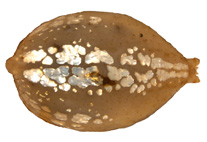Abstract
The discovery of two new species of Harpacticoida (Crustacea, Copepoda), Echinocletodes voightae sp. nov. (Ancorab-olidae Sars, 1909) and Cletodes meyerorum sp. nov. (Cletodidae T. Scott, 1905 sensu Por, 1986), permitted a phylogenetic re-examination of the genus Echinocletodes Lang, 1936, whose membership in Ancorabolidae has been increasingly que-ried in the past decade. Echinocletodes voightae was discovered in wood-falls in the Gorda Ridge (Northeast Pacific Ocean). It resembles the type species E. armatus T. Scott, 1903, sharing with it seven synapomorphies. In contrast, the other two species in the genus, E. bodini Dinet, 1974 and E. walvisi Dinet, 1974, were originally collected in the deep Angola Basin (SE Atlantic), and do not exhibit any of these synapomorphies. In fact they correspond more closely with Cletodes meyerorum, which is undoubtedly Cletodes Brady, 1972, due to the presence of two apomorphies of that genus. Consequently, both E. bodini and E. walvisi are moved from Echinocletodes to Cletodes. A revision of ancorabolid apo-morphies showed ambiguities, being absent from some Ancorabolidae but present in other non-ancorabolid taxa (like e.g. Cletodes). Ancorabolidae were, therefore, considered to be a paraphyletic group that requires extensive re-evaluation, ad-ditionally including at least the Cletodidae and Laophontidae T. Scott, 1905. Similarly when comparing Echinocletodes with the two ancorabolid subfamilies, Ancorabolinae Sars, 1909 and Laophontodinae Lang, 1944, it was revealed that many species are apparently distributed chaotically over several supraspecific taxa (at least Ancorabolidae and Cletodi-dae) instead of forming monophyla.

